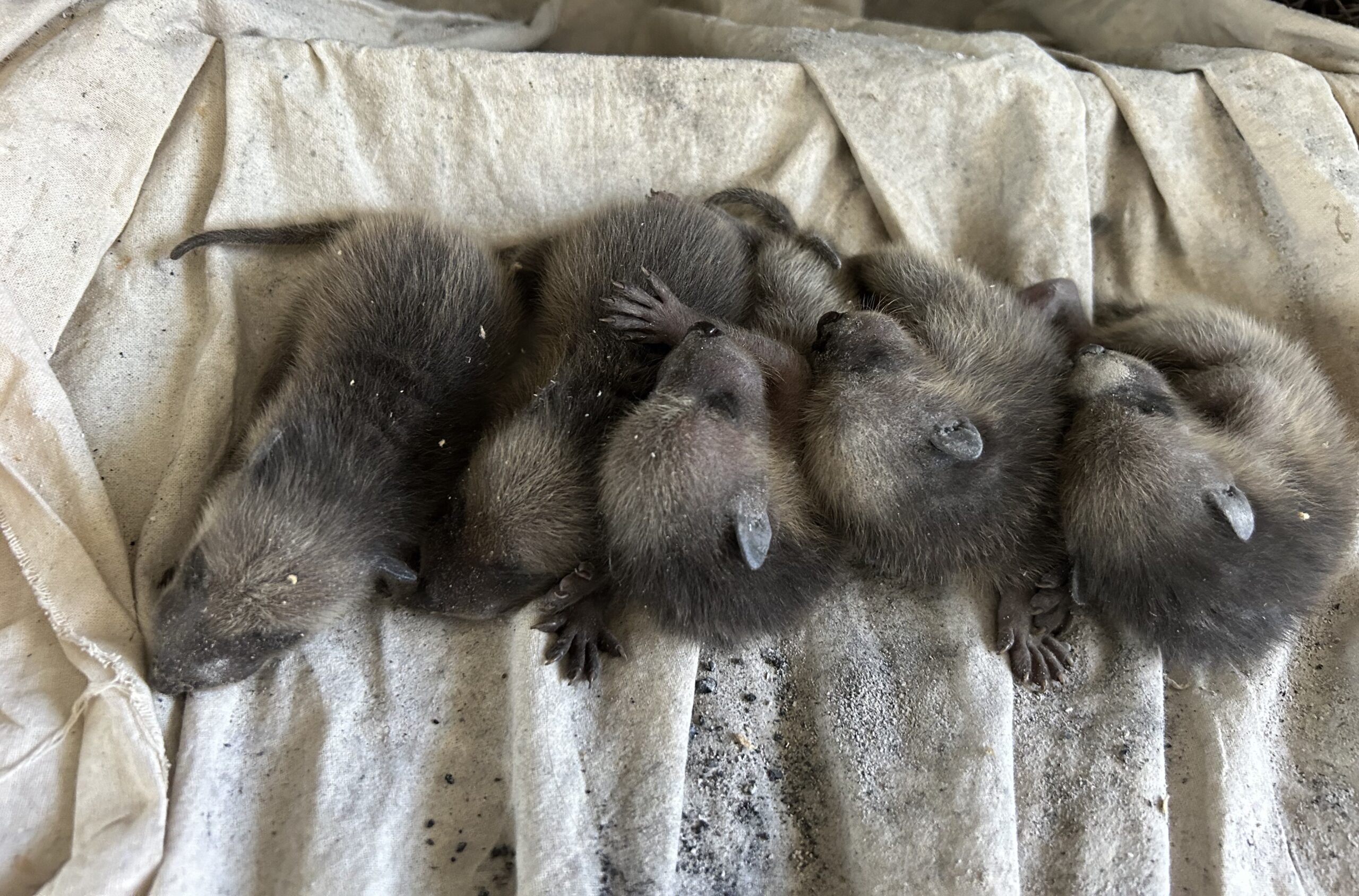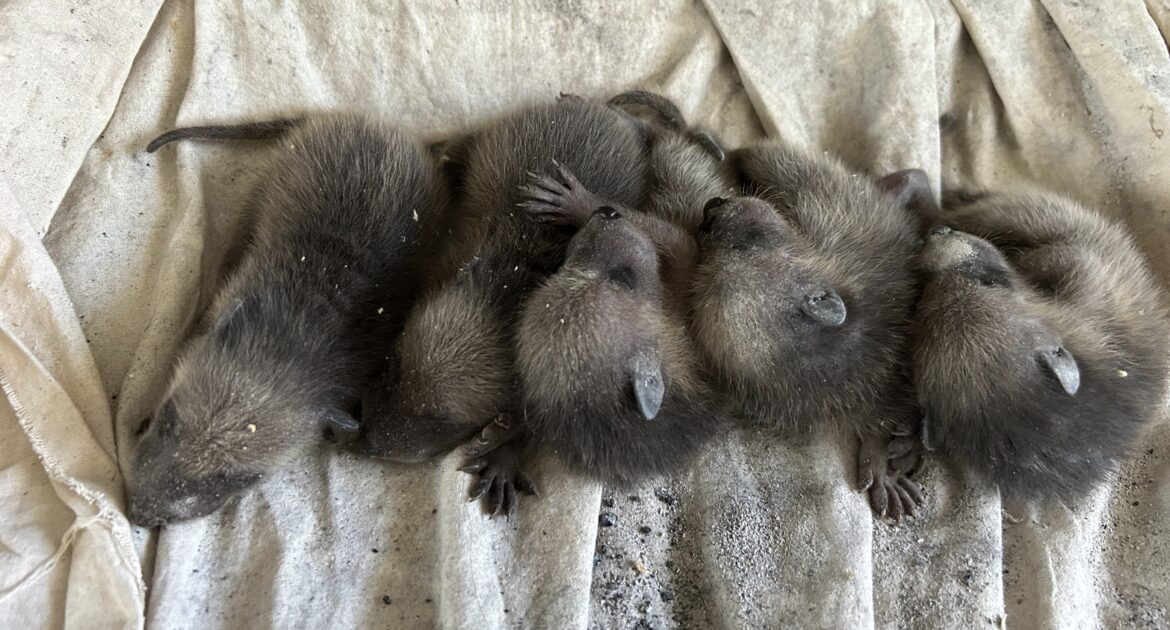Wildlife baby seasons are a fascinating natural phenomenon. If you’ve heard chirping in your attic or noticed increased animal activity in your Niagara neighbourhood, they could be signs of baby season arriving sooner rather than later. Did you know that changes in the weather play a huge role in when and how these seasons unfold for wildlife like squirrels, raccoons, mice, and bats? For homeowners, understanding these patterns can help protect your homes and families from potential wildlife intrusions.
This guide covers how weather influences wildlife baby seasons, the risks of ignoring early signs, and how Skedaddle Humane Wildlife Control in the Niagara Region can assist with safe and humane solutions.
How Weather Affects Wildlife Reproduction
Changes in climate and weather can significantly impact how and when animals reproduce. From warmer winters to sudden cold spells, wildlife adapts its behaviour to ensure its young have the best chance of survival.
1. Squirrels
Squirrels typically have two litters per year, in late winter and summer. However, warmer winters caused by phenomena like El Niño can shift their reproduction timelines. Mild winters give female squirrels better foraging opportunities, leading to earlier pregnancies. The result? Babies are being born weeks ahead of schedule. This increase in squirrel activity could mean they’re eyeing your attic as the perfect nursery.
2. Raccoons
Raccoons are opportunistic animals that thrive in urban environments. These adaptable critters often use attics or chimneys to give birth. Normally, raccoons mate in late winter, but warmer weather can lengthen their mating window, resulting in early litters. Most concerning for homeowners is their tendency to cause significant property damage while finding a safe birthing spot.
3. Mice
Mice are prolific breeders; a single pair can produce upwards of 50 offspring annually under the right conditions. Warmer weather extends their active breeding period, leading to a population boom. Increased food availability during mild winters contributes to their ability to breed continuously, making it harder for families to prevent infestations in basements, garages, and walls.
4. Bats
Bats are vital to ecosystems but prefer quiet, dark spaces—like attics—for maternity roosts. Warmer-than-average nights can support earlier insect activity, which helps pregnant bats gain the energy needed to give birth and raise young. If bats enter your home searching for a secure roost, their droppings can quickly grow into a health hazard.
The Impact of Early Wildlife Baby Seasons on Your Home
Wildlife reproducing earlier in the season doesn’t just affect animals—it can create serious challenges for homeowners. When animals like squirrels, raccoons, or bats seek shelter to give birth, they often end up in attics, crawlspaces, or walls. This can lead to larger litters living in your home, amplifying noise levels, creating odours, and leaving behind a significant mess. Over time, these nesting activities can cause costly structural damage to insulation, wiring, and woodwork.
Additionally, wildlife can introduce health risks. Animals often leave behind urine, feces, and nesting materials, which can contaminate your living space. Some species, like raccoons and bats, can carry dangerous diseases. Raccoons may spread rabies, while bats can transmit histoplasmosis through their droppings. These risks are particularly concerning for families with young children or pets who may come into contact with contaminated areas.
Taking proactive measures to seal off entry points and address wildlife activity promptly is essential to safeguarding your home and ensuring your family’s health and safety.
How to Protect Your Home During Wildlife Baby Seasons
1. Wildlife-Proofing Your Property
One of the easiest ways to protect your home is by sealing off potential entry points. Animals can access your attic, basement, or chimney through small openings. Here are some key steps to follow:
- Install chimney caps.
- Seal gaps around vents and windows.
- Repair broken soffits or roof shingles.
- Keep tree branches trimmed at least 10 feet away from your home.
Proactive monitoring keeps you ahead of intrusions so wildlife doesn’t get comfortable nesting in your living spaces.
2. Decluttering and Food Storage
Wildlife is drawn to human habitats for one main reason—easy access to food. To discourage animals from invading your home:
- Store pet food in airtight containers.
- Regularly clean under appliances to remove crumbs.
- Keep garbage cans tightly sealed and avoid leaving food outside overnight.
Doing this discourages animals like mice and raccoons from finding your home appealing.
3. Stay Ahead of Signs of Wildlife Activity
Be alert for the presence of animals during early baby season. Some telltale signs include:
- Droppings in attics or corners.
- Unusual scratching or squeaking noises at night.
- Chewed insulation, wood, or wires.
When you notice these warning signs, it’s important to act quickly to prevent wildlife from settling in.
How Skedaddle Can Help
If you suspect your home is housing uninvited animal guests, it’s crucial to approach the problem responsibly. Skedaddle Humane Wildlife Control specializes in safe and humane wildlife removal services, and here’s how we can assist you:
1. Expert Wildlife Removal
Skedaddle’s trained technicians use humane, environmentally friendly removal methods that protect both wildlife and your home. We ensure that no animals are harmed while resolving your wildlife concerns.
2. Complete Cleanup and Restoration
Recovering from a wildlife intruder goes beyond simply removing the animal. Skedaddle cleans up feces, urine, and messes while repairing contaminated insulation or dismantling unused nests. This prevents future infestations while ensuring your home is safe for your family.
3. Long-Term Prevention
Wildlife-proofing services are Skedaddle’s specialty. Our comprehensive exclusion work identifies vulnerable areas around your home and seals them to protect against potential future invasions. With decades of hands-on experience, our team knows what it takes to keep squirrels, raccoons, mice, and bats at bay.
4. Customer-Centric Service
We know wildlife intrusion is stressful, particularly during baby season. Skedaddle provides transparent pricing, reliable timelines, and courteous technicians who guide you every step of the way.
Why Waiting Is Risky
Wildlife baby seasons depend heavily on weather, which, as we know, can be unpredictable. Delaying action increases your risk of property damage, contamination, and health concerns.
Taking preventative measures now saves you time, money, and stress later. Better yet, it allows local wildlife to remain safe and undisturbed in their natural habitats.
Take Action Today
If the weather’s warming up and you’re noticing signs of increased wildlife activity around your home, don’t wait for the situation to spiral. Skedaddle Humane Wildlife Control in Niagara is your trusted partner for humane pest removal and prevention.
Visit our website or call us today to schedule an inspection. Together, we can help you enjoy a wildlife-free, peaceful home while coexisting with nature responsibly. Don’t wait—secure your home against early wildlife baby seasons now!




